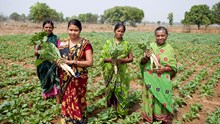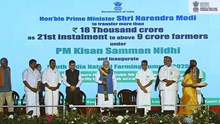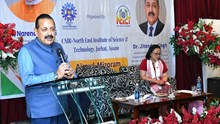
On September 23, India observed its first fixed-date Ayurveda Day. Seminars were held, lamps lit, and speeches delivered. Yet, outside the halls of celebration, a different reality unfolded: allopathic hospitals overflowing with patients, pharmacies crowded with restless buyers, and people forced to spend ₹10,000 on tests before receiving even a basic prescription for the common cold. This, we are told, is “modern science,” a system where treatment begins with diagnostics and ends with a cocktail of pills and side effects.
Contrast this with the forgotten grandeur of Nadi Vigyan. Ancient vaidyas could detect ailments, and even recall a patient’s last meal, merely by feeling the pulse. Folklore speaks of masters who diagnosed from afar, through a thread tied to the wrist, without a single X-ray, MRI, or endoscopy. And we dismiss such traditions as “unscientific”? Why can’t such knowledge, refined and contextualized, be revived for humanity’s sake, accessible, affordable, and inclusive?
History explains why. Under colonial rule, Ayurveda was systematically undermined. British-trained doctors were paid three times more, while vaidyas were ridiculed as “half-doctors.” In America, Ayurveda was dismissed as “hocus-pocus” well into the 20th century. Ironically, today those same nations are including Ayurveda and Yoga in their medical curricula as Life Sciences. The tragedy is that independent India, instead of reviving Ayurveda, tethered its health policies to the Western biomedical model. Thus, Ayurveda, the very soul of Indian medicine, remains sidelined as “alternative.”
To its credit, the Government of India formally launched Ayurveda Day in 2016, aligning it with Dhanteras, the birth anniversary of Lord Dhanvantari. But because the lunar date shifted every year, it became a mere ritual. Only now, in 2025, has September 23 been declared the fixed date, a small but significant step toward global recognition.
COVID-19 reminded the world of what India forgot. Simple formulations, kadha, Trikatu, Ashwagandha, became household shields. Clinical trials of AYUSH-64 demonstrated faster recovery in mild-to-moderate patients when paired with standard care. Most importantly, no adverse side effects were reported. These are not nostalgic claims; they are data-backed outcomes.
Yet opportunity comes with challenges. During a recent visit to Russia, I found that Indian botanicals like Ashwagandha had been quietly added to a “negative list,” stifling exports. How ironic: while the United States extends tariff advantages, other nations erect invisible barriers. This is not just trade discrimination, it is a question of global health justice.
Numbers reveal the scale of neglect. The global herbal and wellness market is estimated at US$ 42–54 billion, perhaps even higher under broader definitions. India’s share? Barely US$ 651 million in 2023–24. A nation that gave the world Charaka, Sushruta, and Dhanvantari now settles for crumbs. Should we not hang our heads?
And yet, India holds unique potential. With 16 agro-climatic zones, over 4,500 medicinal plant species, and 7.55 lakh registered AYUSH practitioners supported by an extensive hospital and dispensary network, India sits on a pharmacological goldmine. With research, standardization, and credible certification, this treasure could capture global markets while transforming rural livelihoods. For farmers and tribals, cultivating medicinal plants can multiply incomes and protect biodiversity, linking ancient wisdom with modern commerce.
That is why Ayurveda Day must not be reduced to just another ritual on the calendar. It should be remembered as the day India stopped treating Ayurveda as a museum relic and restored it as a living science of life. As Charaka wrote centuries ago:
“Swasthasya swasthya rakshanam, aturasya vikara prashamanam cha.”
“To preserve the health of the healthy, and to cure the illness of the ailing.”
The choice is stark. Either India reclaims Ayurveda with bold policies, serious investment in research, and unshakable faith in its own heritage, or history will condemn us for letting the moment pass.
September 23 should, therefore, stand as more than a date. It should mark the return of Ayurveda, not as “alternative,” not as an afterthought, but as a science that can heal India, and perhaps the world.
















